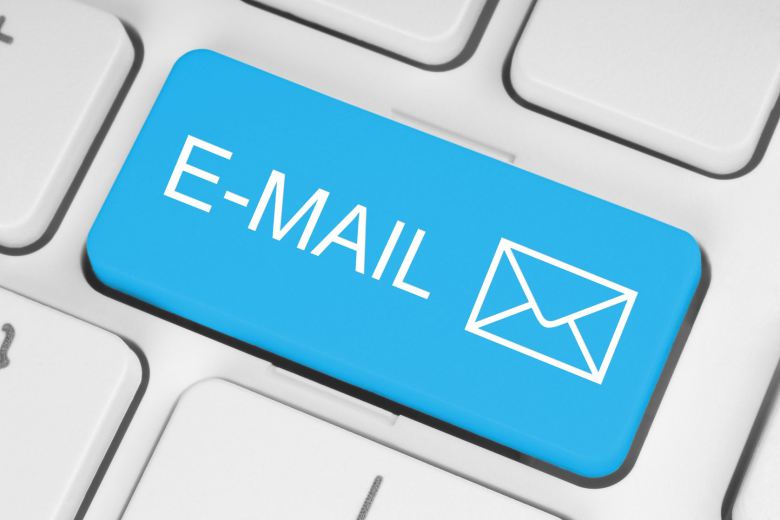Sending a thank you email to the attendees after your event is the perfect way to let them know how much you care. Not only does it show that you care about your attendees after the event, but it also encourages them to come back at the next one you host.
We share with you 5 tips for writing a great thank you email after an event.
Index
1. Interest of the post-event email
Why send an email after your event?
In the 24 hours following your event, attendees have a vivid memory of the positive experience you offered them. This is the ideal time to thank them for coming and maximise their engagement. Take care of the way you address them and increase the likelihood that they will come back to your events.
The week after your event is over is the best time to obtain valuable data. Whether it’s about the attendees or their opinions about their experience, this data is easier to collect soon after your event. Make the most of it!
Also consider sending an e-mail to those registered for your event who were unable to attend. Even if they didn’t attend, they will still be interested in the topic of the event and might enjoy information and related content.
2. Content of the email
Our experience with more than 300 000 event organisers has enabled us to identify the main subjects that you need to address in your communication.
1. Thanks
Of course, a thank you email wouldn’t be a thank you email… without a thank you!
The attendees have taken the time to show up, physically or virtually, to your event. They have trusted your organisation to deliver what was promised, and thanking them has to be a priority.
Your email should start with this section.
2. Sharing content
To continue to feed the curiosity and interest of your audience, it is a good idea to provide them with different content in multiple formats, adapted to your type of event.
This content can take the form of a recap of the event, presentation materials used during the event, photos, videos, or even additional information on the topics covered in the event.
It can also be exclusive content: a white paper, a discount, a sales brochure, etc. The possibilities are endless and should be explored to meet the expectations of your target audience and related to your sector of activity.
All this shared content allows you to continue to nurture attendees, generate leads or convert existing ones into qualified leads.
3. Collecting feedback
Asking attendees for feedback on their experience during your event has many advantages:
- It allows you to identify areas for improvement for future editions. It is easy for an attendee to identify them rather than the organiser.
- You give voice to your community and value their opinion. Attendees will feel heard and will be more engaged. Make sure you take their feedback into consideration and implement the necessary actions to improve.
- Collecting feedback on your event will allow you to create content, especially from positive comments. You can attract new attendees by sharing these comments on social media.
- The feedback form allows you to collect data about the attendees (interests, size of their company, preferences, job title…).
3. Subject and pre-header
To ensure that your thank-you campaign is read, pay attention to the subject line and pre-header of your email. These two elements, in addition to your sender’s name, encourage attendees to open your email and can increase its open rate.
1. Subject of the email
- The subject line should be short, clear and relevant. It must spark curiosity without distorting the reality of what the recipient will find when opening the email. Keep the subject line about 35 characters, (less than 10 words).
- Avoid overly aggressive punctuation (“???”, “!!!”) or excessive capitalization. What may seem like a good technique to show your enthusiasm could make your email land in the spam box.
2. Pre-header
- The pre-header is the second bit of text that is visible before you click on an email. Originally, it was the first sentence of your email. Today, most emailing tools allow you to modify it as you wish to optimise its impact.
- Treat the pre-header as additional information to the subject line of your email. It should also encourage people to open your email.
Personalise the subject or pre-header by adding a custom field such as your contact’s name. This encourages the recipient to open your email.
4. Solutions for sending your thank you emails
There are several options to send your thank you email to your contacts:
1. 1 to 1 email
Send an email directly to each attendee registered for your event, taking care to personalise the content (first name, name of the event). This option seems the simplest, but it requires a considerable amount of time to prepare and send. It is really only an option if you only have a handful of contacts and time to spare.
2. Using a CRM
Using a Marketing and CRM tool allows you to save time and achieve conversions more efficiently. This is the best option, regardless of the size or sector of your event.
Thanks to a CRM solution like WeezTarget, you can segment your audience and send personalised email campaigns in a few clicks.
This method also allows you to implement marketing automation campaigns. You can schedule emails to be sent automatically after your event, based on previously defined criteria.
Attendees and non-attendees receive personalised emails without any extra effort on your side. This system is especially interesting if you address a large number of attendees or if you organise events on a regular basis.
You now have everything you need to know to send an effective thank you email after your event. Take advantage of the free CRM solution WeezTarget and schedule your next emails today.
Do you have any questions? Don’t hesitate to contact our team.



